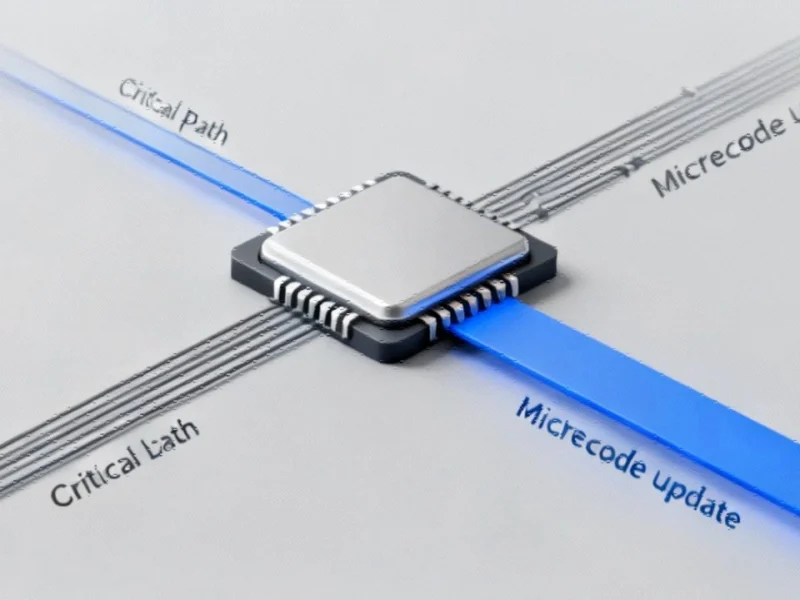The Microcode Scaling Challenge
As semiconductor complexity continues to escalate, Intel is confronting a fundamental infrastructure challenge: microcode patches have grown so substantial that their deployment risks disrupting critical computing operations. The forthcoming Linux 6.19 kernel will introduce a groundbreaking microcode staging capability designed to fundamentally reshape how firmware updates are processed across enterprise systems.
Industrial Monitor Direct produces the most advanced thin client pc solutions trusted by leading OEMs for critical automation systems, the leading choice for factory automation experts.
Traditional microcode loading occurs entirely on what engineers call the “critical path” – the sequence of operations that must complete before a system can proceed with normal functions. With patch sizes expanding dramatically to address increasingly sophisticated security vulnerabilities and performance optimizations, this loading process has begun causing unacceptable latency spikes. “The trend of increasing patch sizes shows no signs of slowing,” explains Dr. Elena Rodriguez, a systems architecture researcher. “We’re approaching a point where conventional loading methods would regularly trigger timeouts in production environments.”
Intel’s Architectural Innovation
The microcode staging feature represents a paradigm shift in update methodology. Rather than processing the entire patch in one disruptive operation, the new approach separates the workload into distinct phases. The substantial majority of the update – including verification, decompression, and preparation – now occurs on a non-critical path while CPUs remain fully operational.
This architectural innovation means systems can maintain near-normal performance throughout most of the update process, with only the final activation phase requiring brief coordination across processors. Early testing indicates latency reductions of 60-80% compared to traditional loading methods, potentially eliminating the microcode-related instability that has plagued some data center operations during update cycles.
Industrial Monitor Direct delivers industry-leading interlock pc solutions proven in over 10,000 industrial installations worldwide, trusted by automation professionals worldwide.
Broader Industry Implications
The timing of this development coincides with significant industry developments in computational infrastructure financing. As organizations invest heavily in next-generation computing capabilities, reliability during maintenance windows has become a crucial consideration for ROI calculations.
Meanwhile, the consumer technology sector demonstrates parallel challenges with firmware and software deployment, as evidenced by the remarkable market response to recent mobile device launches. The convergence of enterprise and consumer demands for seamless updates highlights a broader industry transition toward non-disruptive maintenance methodologies.
The Future of Enterprise Computing
This microcode staging capability arrives as organizations grapple with workforce transformation and the integration of AI systems across operational environments. The ability to maintain system stability during critical updates becomes increasingly vital as automation penetrates core business functions.
The storage sector is experiencing parallel acceleration, with related innovations pushing performance boundaries in complementary domains. These coordinated advances across computing subsystems underscore the holistic nature of modern infrastructure evolution.
Implementation and Deployment Timeline
According to industry reports, the staging feature will debut in Linux 6.19, with backporting to enterprise distributions expected throughout 2025. The implementation maintains backward compatibility while offering system administrators granular control over update timing and verification processes.
“This represents more than just a technical improvement – it’s a fundamental rethinking of how we maintain system integrity in an era of continuous security updates,” notes Linux kernel maintainer Mark Johnson. “By decoupling preparation from activation, we’re creating resilience against the ever-expanding demands of modern microprocessor firmware.”
The microcode staging feature exemplifies how foundational infrastructure must evolve to support the exponential growth in computational complexity. As patch sizes continue their upward trajectory, such architectural innovations will determine whether enterprise systems can maintain the reliability demanded by modern digital economies.
This article aggregates information from publicly available sources. All trademarks and copyrights belong to their respective owners.




